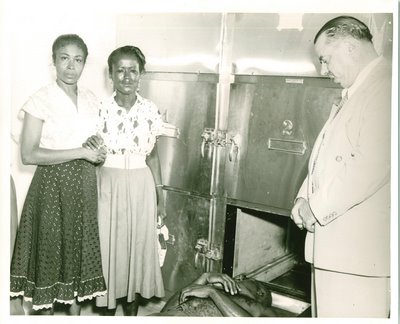Karen Armstrong's
The Great Transformation.In one of The Teaching Company's philosophy tapes on Emmanuel Kant the lecturer says that the "categorical imperative" is really just The Golden Rule restated. For a listener it was a jarring--and funny--thing to hear. "That's it? He must have felt foolish to have wasted all of that time and effort writing. I feel foolish at having spent the time I did trying to understand."
That statement stuck with me. It was a check on getting too impressed with the works of a "Philosopher," and with difficult reading. It was a reminder that there were some good lessons to be learned from our religion even if we reject practicing it. It was a reminder not to reject the simple in preference of the complex. E=mc2 was not less profound for being simply expressed.
The Golden Rule gets a featured role in Karen Armstrong's
The Great Transformation, the beginning of our Religious Traditions, humankind's religious traditions too: Christianity, Judaism, Islam, Hindu, Buddhism, etc.
Ms. Armstrong's point is that there is common ground in the antecedents of these world religions, even as their contemporary practice shows only violent differences. The common pure as snow source for these different muddy rivers* is the lessons of the sages of the "Axial Age," from about 900-200 BCE.
To make a 400 page long story one sentence short that common source is some variant of The Golden Rule that each of these religious traditions had in the Axial Age and if all of us could follow The Golden Rule we could help ourselves out of the current pickle we're in.
In her introduction Ms. Armstrong wrote that she would propose a course of action in the last chapter, impressively titled "The Way Forward."
It is easy to make fun of a writer by quoting her out of context when the subject is the practical application of such an abstract principle:
"If, for example, every time we were tempted to say something hostile about...an enemy country, we considered how we would feel if such a remark were made about us--and refrained--we would, in that moment, have gone beyond ourselves. It would be a moment of transcendence."
"
If you can't say something nice..." All right that's a considerate point to keep in mind but don't we already do that? The interpersonal conduct of world leaders is so pleasant, and "diplomatic language" is synonymous with tempered, measured speech. "The test is simple: if people's beliefs--secular or religious--make them belligerent, intolerant, and unkind about other people's faith, they are not 'skillful' [in Buddhism's language]."
There is no way forward proposed here to deal with one of the most recurring dilemmas that tolerant people face: what to do when confronted by intolerance. In Manhattan,
Woody Allen is having a discussion with some Manhattanites and tells them that Nazis plan on marching in New Jersey. He proposes violent confrontation. A female auditor says something like "Wouldn't it be more civilized to just talk to them?," and Allen responds "No, with Nazis baseball bats and bricks work better than words.""What should be our response? [to "religiously inspired terrorism"]. The Axial sages gave us two important pieces of advice.
First [italics hers], there must be self-criticism. Instead of simply lambasting the 'other side,' people must examine their own behavior..." "...in our current predicament, the Axial sages would probably tell us, reformation must start at home. Before stridently insisting that another religion clean up its act, we should look into our own traditions, scriptures, and history--and amend our own behavior. "
Oh my. Nothing is proposed about what we should require the other religion to do. In fact, to the extent there is anything concrete proposed here at all it is that we do nothing to or about the Other's conduct because a condition precedent to that--"before"--"we must amend our own behavior." Ms. Armstrong does not even suggest specifically what of our behavior we must change. "Second [her italics], we should follow the example of the Axial sages and take
practical, effective action.[my italics]. When they confronted aggression in their own traditions, they did not pretend that it was not there but worked vigorously to change their religion..."
Again, the emphasis is on what WE --not the Other--should do and again there is not even one example given of what in our religion we should work vigorously to change."In order to reclaim their faith, their coreligionists [
unclear language here but in context she seems to mean all religious people] should embark on a program of disciplined and creative study, discussion, reflection and action."
That's it. Four pages later the book ends.Ms. Armstrong seems like such a sincere, earnest writer. She does not write in a pompous way but rather with modesty and with evident intent to help, but how disappointing an ending. She is an intelligent, sincere, self-aware person. She knew how weak The Way Forward was. She should have had the courage and the self-critical intellectual honesty to postpone publication of the book until she had substantive steps to propose. This is Public Occurrences.
*This wonderful metaphor is credited to George Will who wrote it a generation ago: "Abraham Lincoln was the founder of the Republican party which is proof that even a muddy river can
have snow at its source."



















